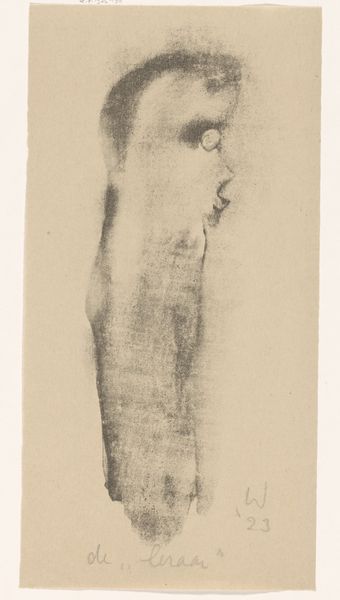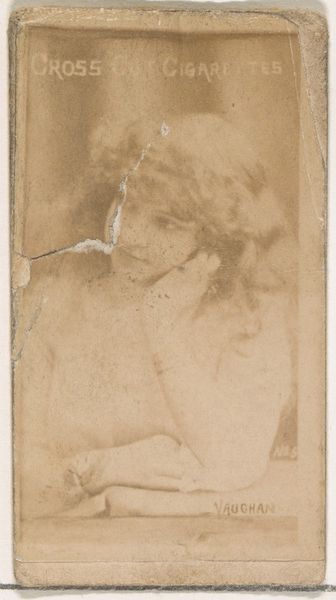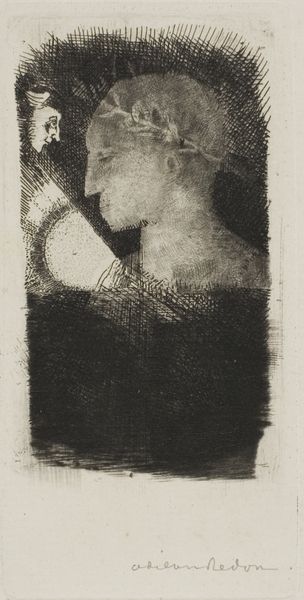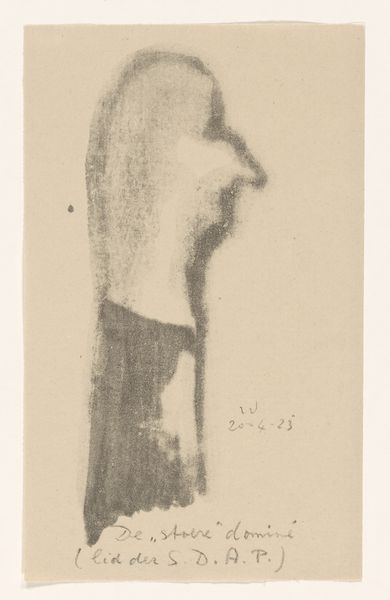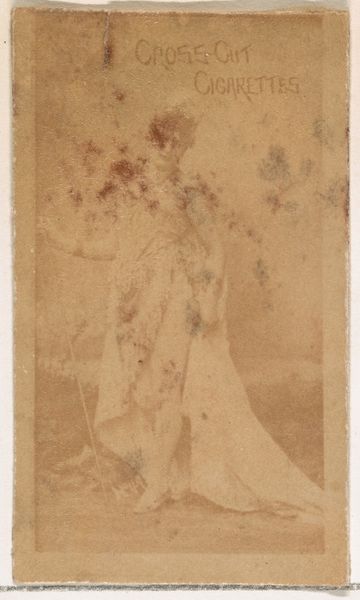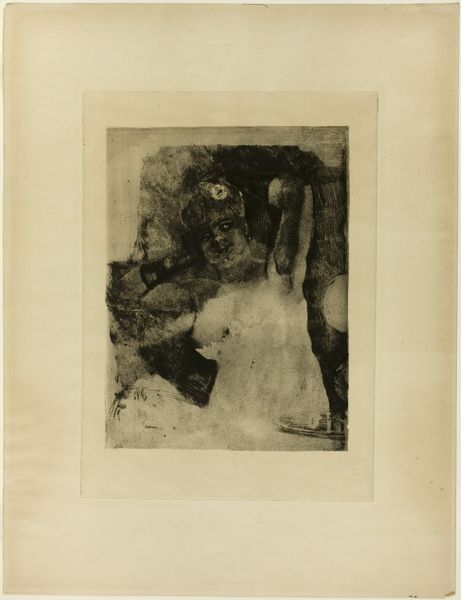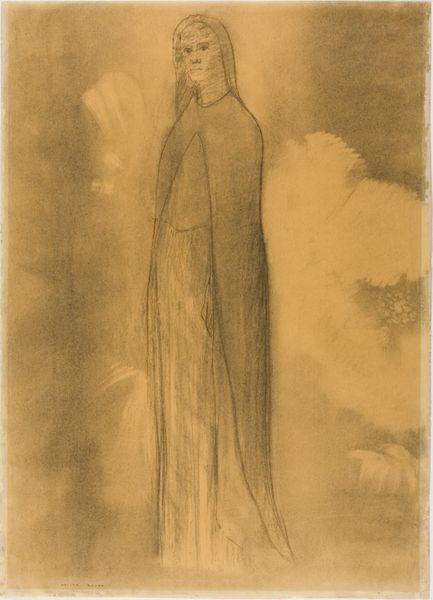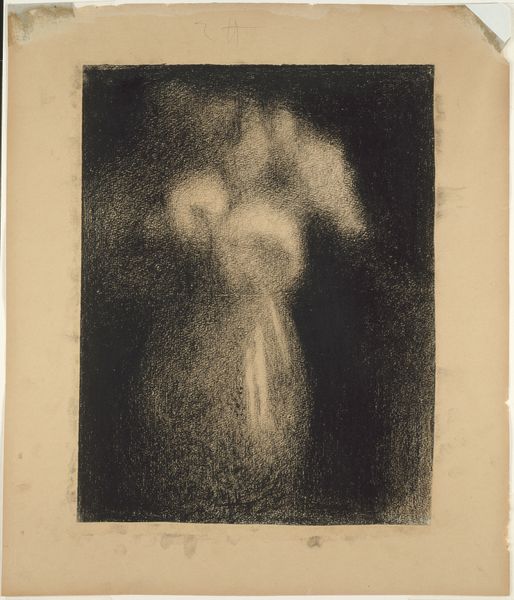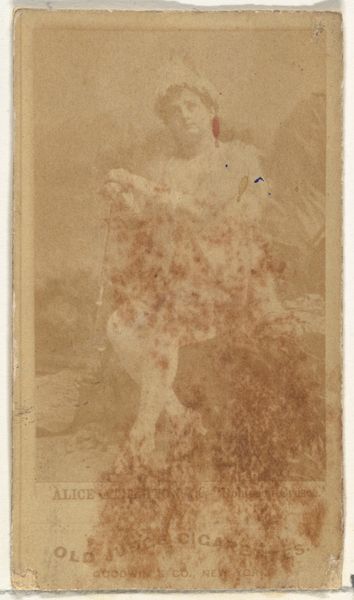
print, etching
#
portrait
#
art-nouveau
# print
#
etching
#
figuration
#
nude
#
erotic-art
Dimensions: image: 29.5 x 10.2 cm (11 5/8 x 4 in.) plate: 30.9 x 11.5 cm (12 3/16 x 4 1/2 in.) sheet: 32.9 cm (12 15/16 in.)
Copyright: National Gallery of Art: CC0 1.0
Curator: Standing before us is Armand Rassenfosse's "Blonde," an etching created around 1901. What are your initial impressions? Editor: Ethereal, almost dreamlike. The figure emerges gently from the background; the pose and the muted tones create a rather sensual experience. Curator: Sensuality was indeed a central concern of the period. As Art Nouveau took hold, there was a strong move away from rigid academic art toward the subjective and often erotic, especially in printed media that reached wider audiences. Editor: It's the technique itself contributing to that softness, isn’t it? The etching lines are incredibly fine, building up tone gradually, there’s no single sharp line defining the nude body here. The upward reach is mirrored in her fair hair almost blending into the shadows. Curator: Certainly. This piece needs to be considered in the context of the commercialization of art and beauty in turn-of-the-century Belgium, and broader Western Europe, really. It existed within a visual culture that increasingly celebrated and objectified the female form for consumption. Editor: Do you feel the upward-reaching pose contributes to a feeling of liberation, of a subject empowered, despite being nude? Curator: That’s an interesting read but it depends. Art Nouveau loved nature. Therefore, "liberation" here has less to do with individual emancipation but to celebrate feminine beauty as one aspect of decorative culture, and commercial possibilities abound as images were readily available, in prints or reproduction. It is important to see it in that light to understand Rassenfosse’s overall body of work. Editor: A fascinating interplay of visual beauty and cultural forces that’s visible on closer examination. Curator: Exactly, bringing attention to context helps one avoid simplified views and to deepen one’s experience of visual culture. Editor: A chance, then, to enjoy Rassenfosse's rendering here for his careful composition. But also with questions around how cultural and social landscapes feed into these aesthetic decisions.
Comments
No comments
Be the first to comment and join the conversation on the ultimate creative platform.
